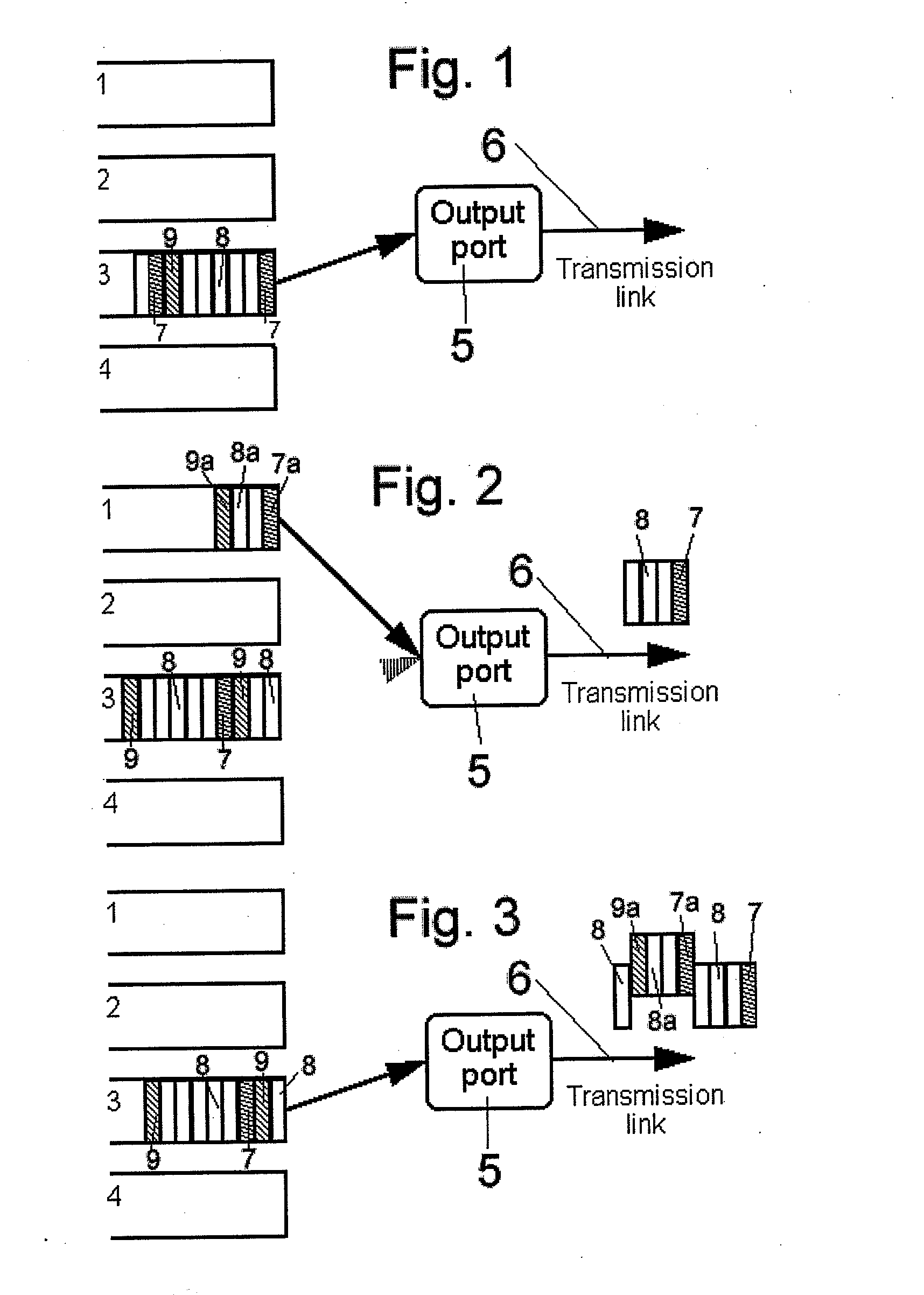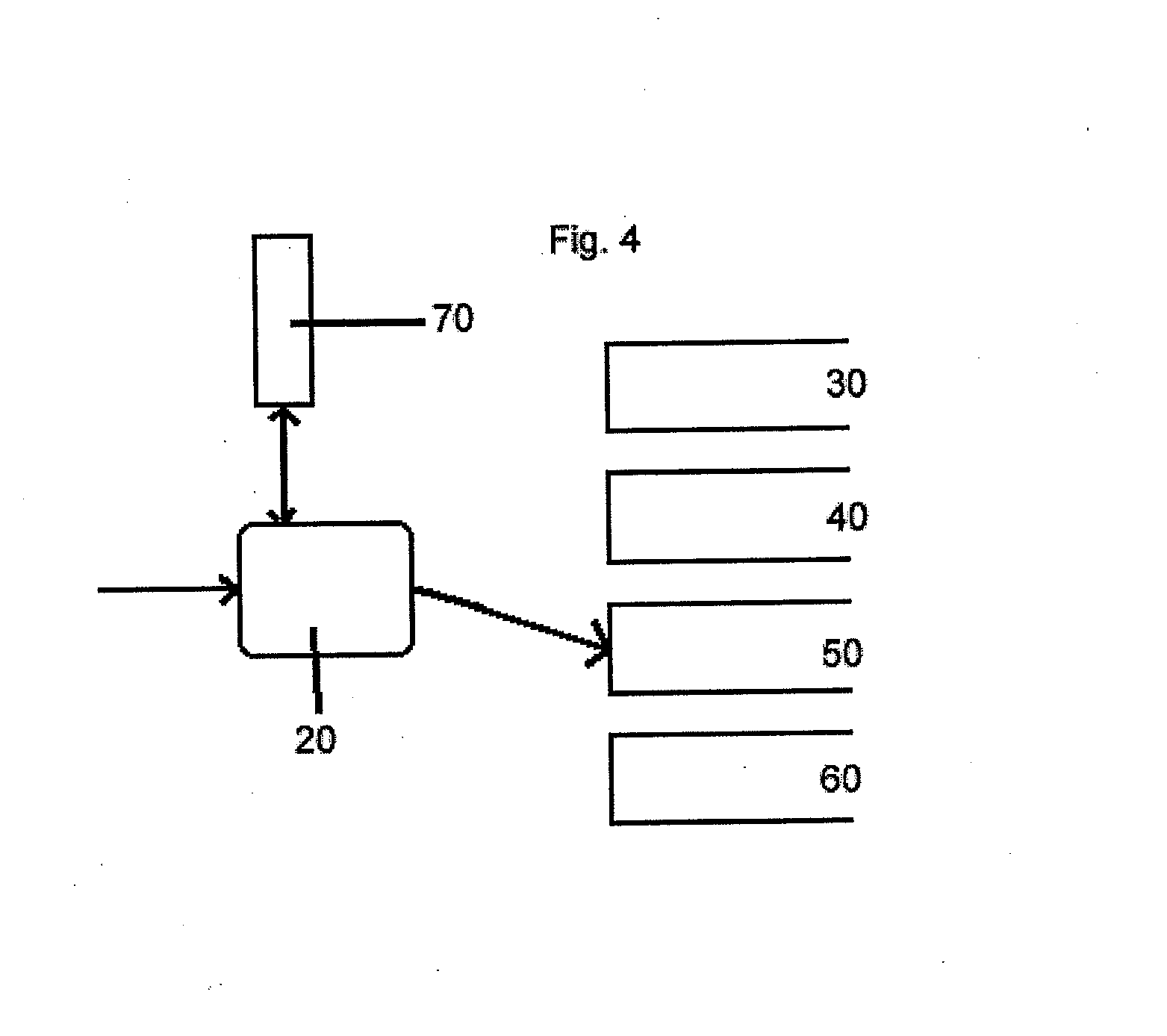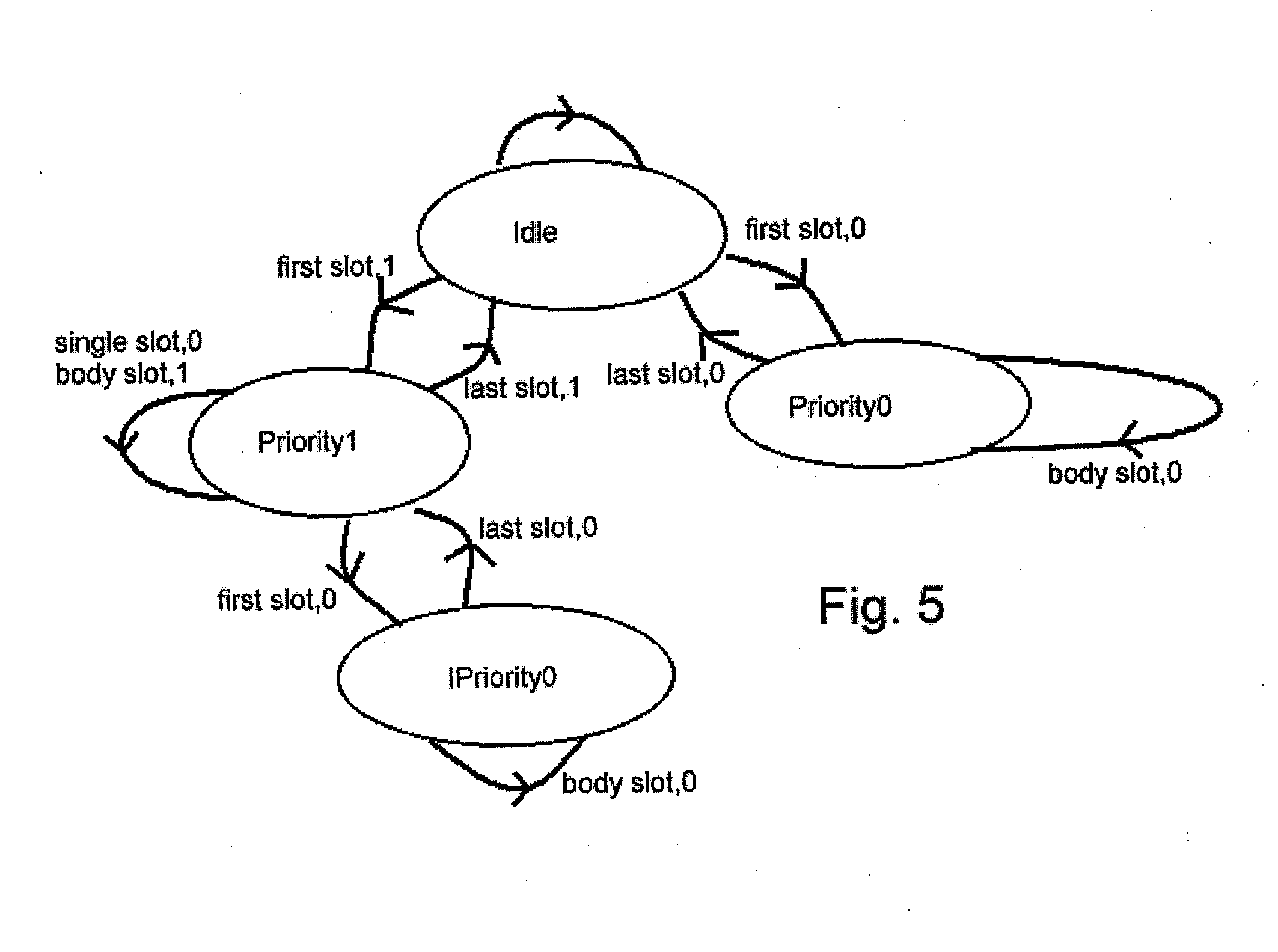Switch and a switching method
a technology of priority and switching method, which is applied in the field of priority enabled switching apparatus and method, can solve the problems of increasing overhead, reducing the efficiency of switching, and reducing the size of memory
- Summary
- Abstract
- Description
- Claims
- Application Information
AI Technical Summary
Benefits of technology
Problems solved by technology
Method used
Image
Examples
Embodiment Construction
[0048]FIG. 1 is a representation of part of a switch including a number of input queues to be processed according to the present invention. Traffic, in the form of data elements such as slots, is received at queues 1-4. Queue 1 is predetermined to receive the highest priority switching treatment whilst queue 4 receives the lowest priority switching treatment. A processor (not shown) monitors traffic arriving at the queues to control the switching of traffic to an output port 5 which is connected to a transmission link 6.
[0049]A traffic stream received at queue 3 includes a start slot 7, a number of body slots 8 and an end slot 9. As there is no higher priority traffic waiting in other queues to be transmitted, the processor switches the traffic in queue 3 to the output port 5 starting with start slot 7, followed by body slots 8 and end slot 9.
[0050]However, if during transmission of the slots, traffic 7a-9a arrives at queue 1, it is detected by the processor. As the queue 1 is entit...
PUM
 Login to View More
Login to View More Abstract
Description
Claims
Application Information
 Login to View More
Login to View More - R&D
- Intellectual Property
- Life Sciences
- Materials
- Tech Scout
- Unparalleled Data Quality
- Higher Quality Content
- 60% Fewer Hallucinations
Browse by: Latest US Patents, China's latest patents, Technical Efficacy Thesaurus, Application Domain, Technology Topic, Popular Technical Reports.
© 2025 PatSnap. All rights reserved.Legal|Privacy policy|Modern Slavery Act Transparency Statement|Sitemap|About US| Contact US: help@patsnap.com



